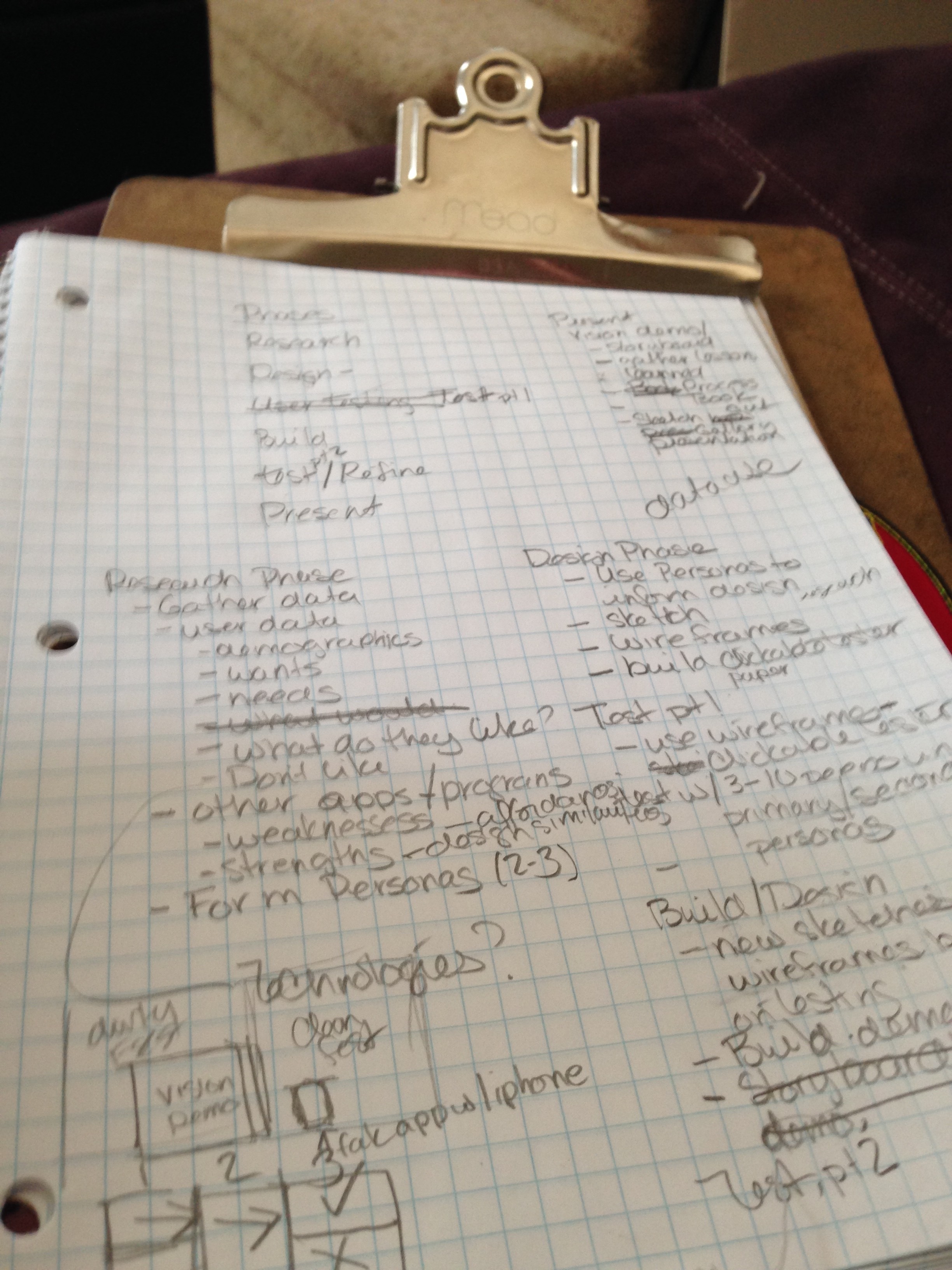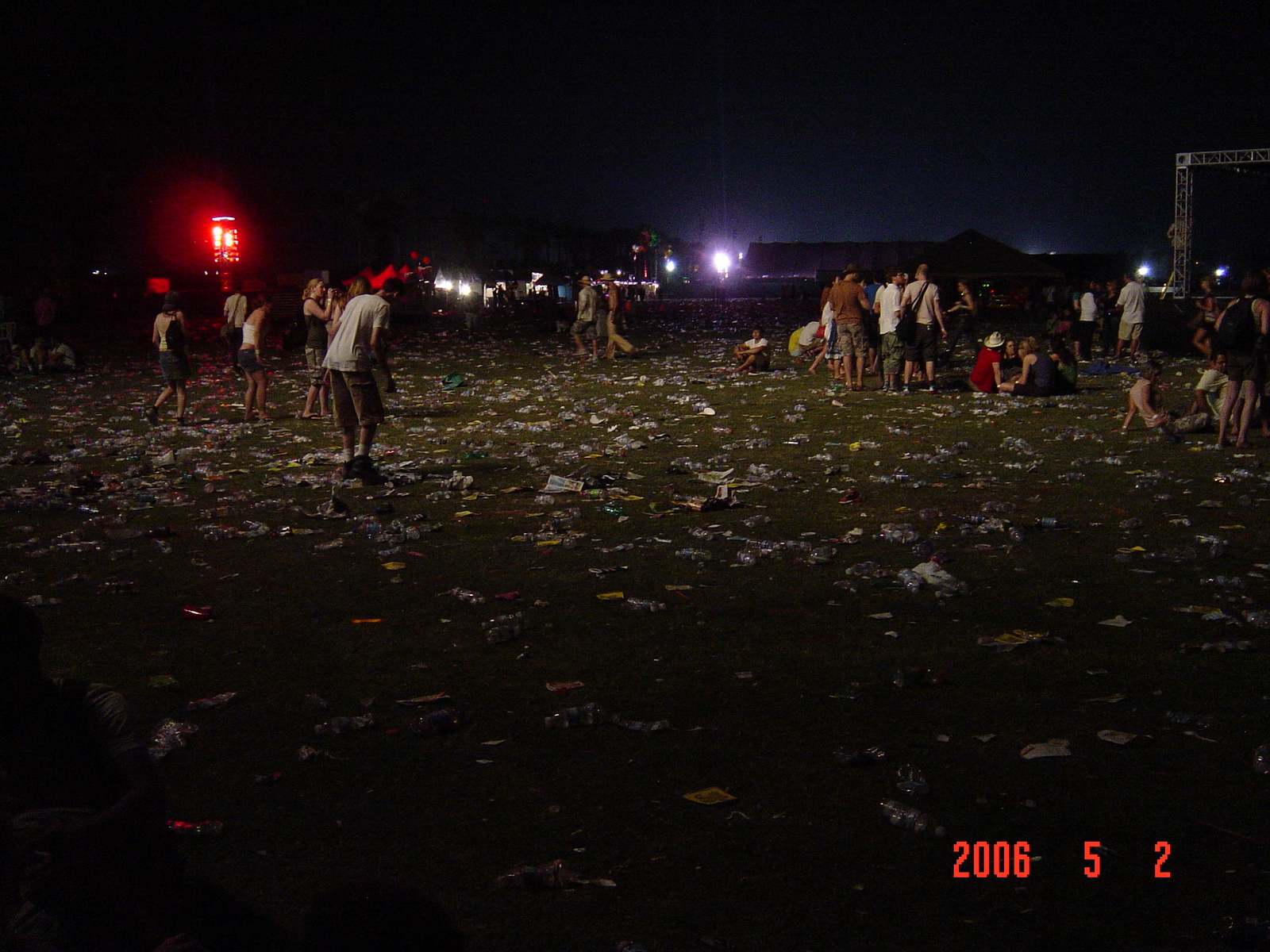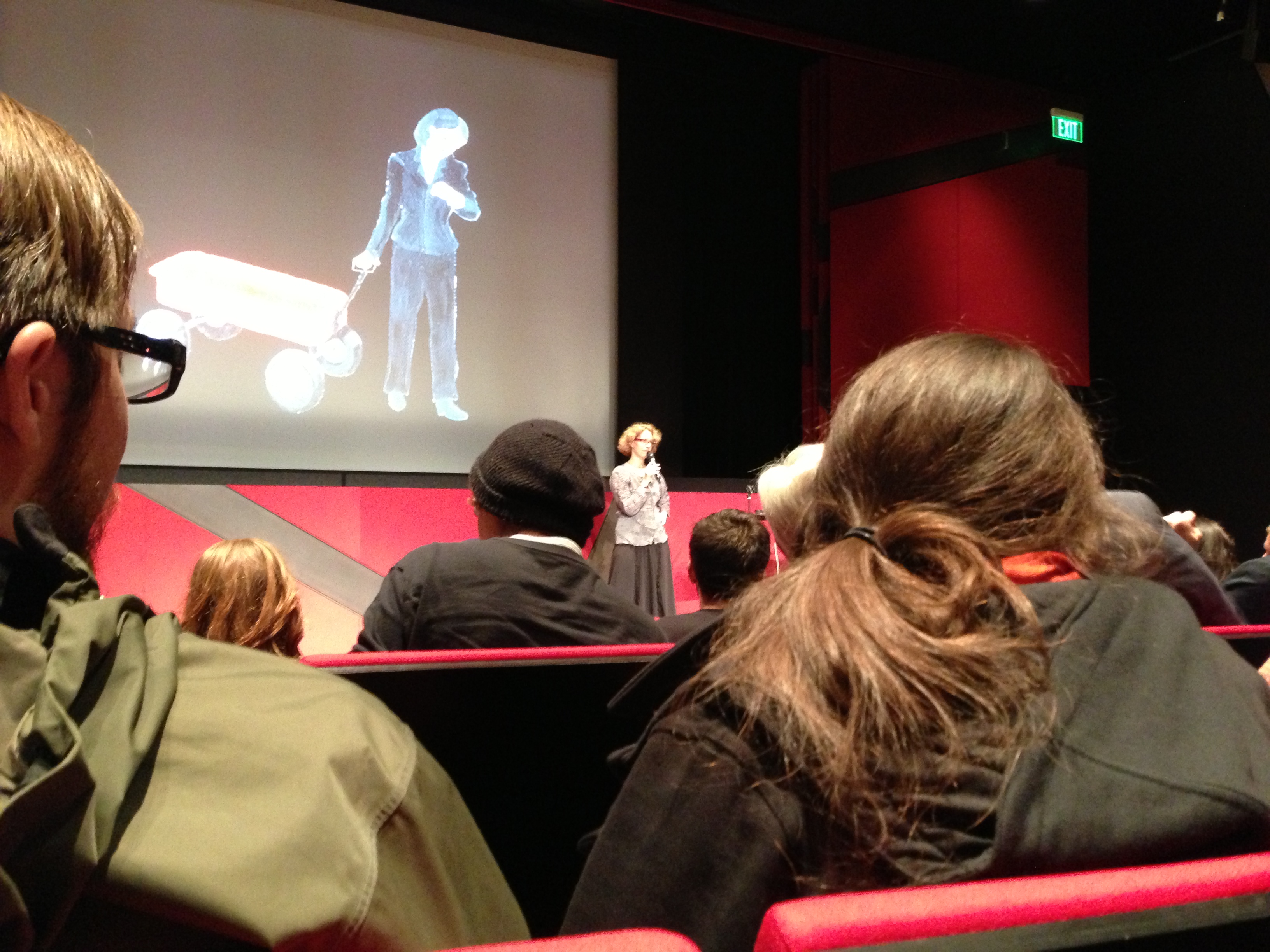Kristin “Miki” Hansen
Thesis Research Paper
Practices of Design
Fall 2013
Music Festival Litter and Cleanup
It’s a warm sunny day and you are standing in a field punctuated by piles of garbage; Plastic bags and food wrappers flying in the air off to some unknown destination. Various party and show flyers, lost shoes, broken camp chairs, the occasional decorated doll head on the end of a stick, abandoned signs, sunglasses and a whole litany of other types of garbage are in every direction you look. Where are you, at a garbage dump? No, what you are seeing is in fact the aftermath of a multi-day music festival campground. Not only is the mess left behind at such festivals unsightly, it also has negative environmental and social impacts as well.
Clean up of such messes can be costly and the mess can leave neighbors of the festival with a negative view of the festival and its attendees. Many festivals have tried to offset these negatives by relying on clean up volunteers and trash trade-in programs, which have had some success. However, most festivals still struggle with how to clean up the mess that is left behind. Is there a way to improve upon the programs already in place and take them to the next level? Can interaction design be used to encourage festivalgoers to behave in a more responsible manner? I believe so, and that is what I aim to prove.
Although many people may say this problem is not an issue of design, but rather one of education, I say, what is design other than trying to convince or educate others that your point of view is more correct or better than other views? Looking at two other programs, which offered a partial solution to this same issue of festival clean up, we can see how design could improve the acceptance and success of such programs.
Coachella Water Exchange Program
In 2006, I attended the Coachella Valley Music and Arts Festival for the first time. One thing that stuck out in my memory of the festival was at the end of each day, the polo fields on which the festival was held were TRASHED. (Insert photo here) Upon review of the attached photo, you may notice that a good percentage of this trash is plastic water bottles. In an attempt to address the issue of trash, the next year, a new program was implemented consisting of two parts; a reusable water bottle was sold with exclusive cold-water refill stations, and a used water bottle recycling program. The refillable water bottle offered an exclusive, souvenir bottle for a small fee of $20, which included access to water that was cold (a very enticing incentive for a festival held in the So Cal desert) and was extremely popular. (Insert numbers here if Goldenvoice provides) The used water bottle recycling program provided the incentive to festival participants to pick up after themselves by offering 1 free bottle of water for every ten empty bottles festival goers brought to designated recycling stations. Both programs were considered great successes, and are still in use at Coachella today, and have even
been copied at other festivals.
However, the use of interactive design could improve the reach and acceptance of these programs to bring greater effectiveness and result in less time spent on cleanup.


